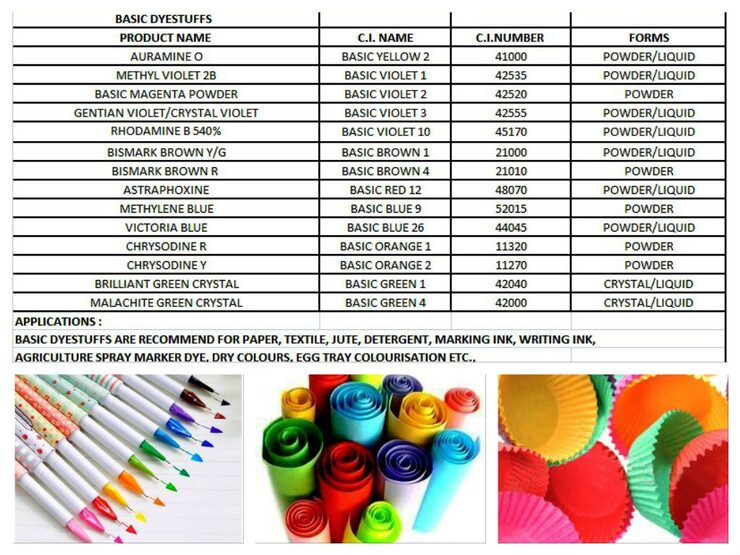Basic dyes, also known as cationic dyes, are a class of synthetic dyes that are primarily used to color synthetic fibers such as acrylic, polyester, and nylon. These dyes are called "basic" because they are positively charged molecules that interact with the negatively charged sites on the surface of synthetic fibers.
Basic dyes are known for their bright and intense colors, making them suitable for applications where vibrant hues are desired. They have a high affinity for synthetic fibers, allowing them to penetrate deeply into the fiber structure and produce long-lasting coloration.
The dyeing process with basic dyes typically involves preparing a dye bath by dissolving the dye in hot water and then immersing the synthetic material into the dye bath. The positively charged dye molecules are attracted to the negatively charged sites on the fiber surface, leading to strong bonding and coloration. After dyeing, the material may undergo additional steps such as rinsing and washing to remove excess dye and improve color fastness.
Basic dyes are commonly used in the textile industry for dyeing synthetic fibers used in clothing, upholstery, carpets, and other applications. They are also used in other industries such as paper, leather, and plastics for coloring various products.
One drawback of basic dyes is that they tend to have poor lightfastness and washfastness, meaning that the colors may fade over time with exposure to sunlight and repeated washing. However, advancements in dye technology have led to the development of basic dyes with improved color fastness properties.
Overall, basic dyes are valued for their ability to produce bright and intense colors on synthetic fibers, making them widely used in the manufacturing of colorful textiles and other products.


